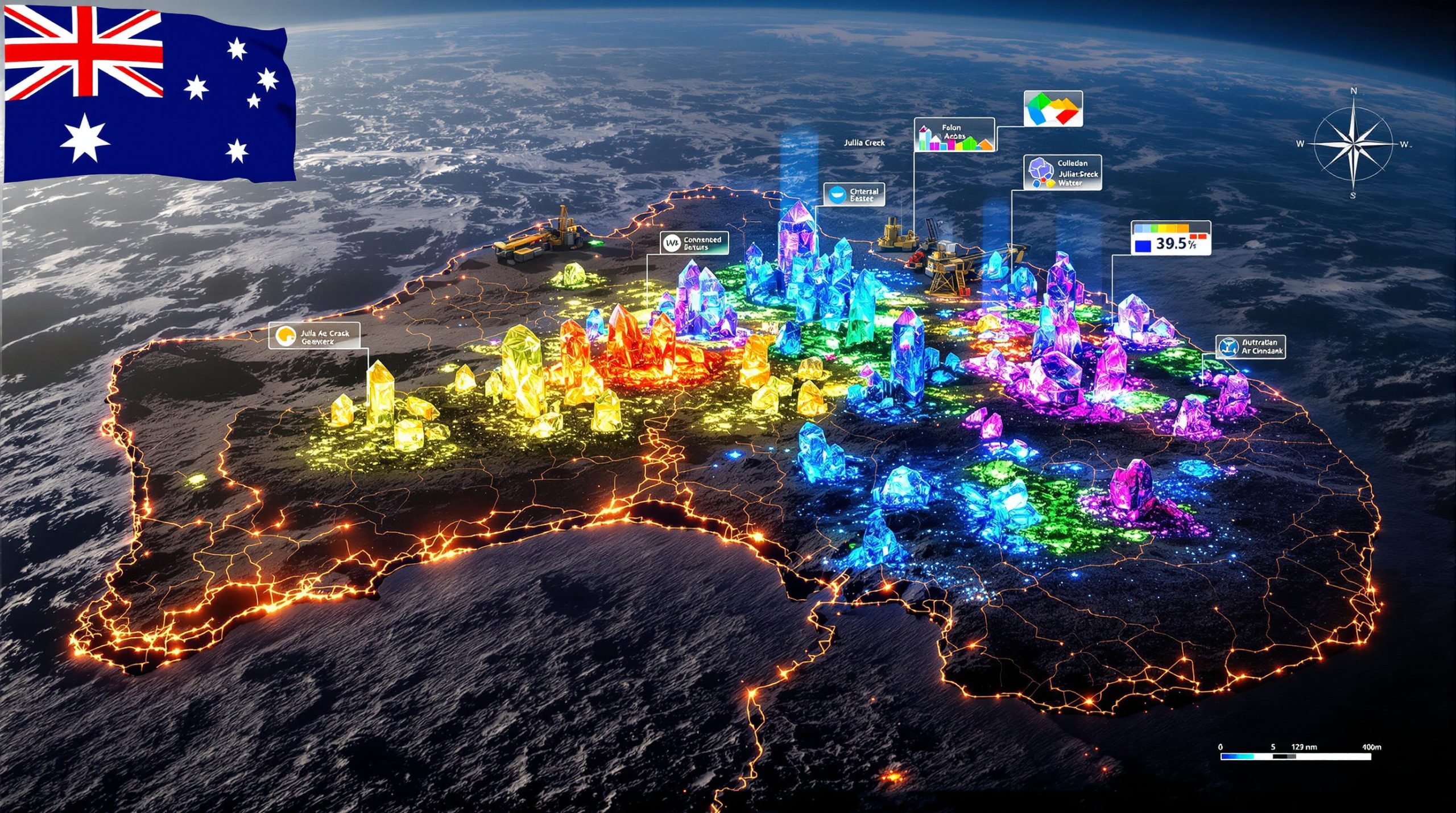Current State of the Rare Earth Market: Stability Amid Wait-and-See Sentiment
The rare earth market is currently operating in a stable pattern with minimal price fluctuations across most elements. According to the latest market data from Shanghai Metal Market (SMM), this stability comes amid strong wait-and-see sentiment from participants as downstream demand remains constrained.
Key rare earth oxide prices as of July 2025 show a market in careful equilibrium. Praseodymium-Neodymium (Pr-Nd) oxide maintains stability at 444,000-445,000 yuan/mt, while Dysprosium oxide has stabilized at 1.61-1.62 million yuan/mt. Terbium oxide shows a slight decrease to 7.05-7.08 million yuan/mt, reflecting nuanced pressure points within the sector.
"Currently, the rare earth market and price trends are generally running steadily, with most elements showing minimal price volatility despite underlying supply-demand tensions," notes the latest SMM market analysis.
Light vs. Heavy Rare Earth Price Movements
Light rare earth elements (primarily used in high-volume applications) show remarkable price stability. Lanthanum-Cerium products maintain consistent pricing with minimal volatility, serving as a baseline indicator for the broader market.
Medium-heavy rare earth elements display more varied patterns. While Dysprosium oxide has found stability, Terbium oxide shows a slight downward movement. Gadolinium oxide has experienced a minor decline to 162,000-163,000 yuan/mt, while Holmium oxide holds steady at 514,000-518,000 yuan/mt. Erbium oxide continues to fluctuate within a narrow band of 300,000-305,000 yuan/mt.
Metal Market Performance Indicators
The rare earth metal segment, which represents value-added processing beyond raw oxides, shows nuanced price movements that offer insight into manufacturing demand trends.
In the light rare earth metals category, Pr-Nd alloy has seen a slight increase to 543,000-548,000 yuan/mt, primarily driven by firm oxide prices and tightening low-priced supply. Meanwhile, Lanthanum-Cerium alloy maintains stability in the 17,000-19,000 yuan/mt range.
Medium-heavy rare earth metals show similar stability patterns. Dysprosium-Iron alloy remains steady at 1.56-1.58 million yuan/mt, while Terbium metal has decreased slightly to 8.7-8.8 million yuan/mt due to transaction stalemates. Both Gadolinium-Iron alloy (156,000-157,000 yuan/mt) and Holmium-Iron alloy (515,000-525,000 yuan/mt) continue to demonstrate price consistency.
Factors Influencing Current Rare Earth Prices: A Complex Supply-Demand Equation
The rare earth market and price trends are experiencing a complex interplay of supply and demand factors that collectively maintain price stability while limiting significant upward movement. Understanding these dynamics requires examining both sides of the market equation.
Supply-Side Considerations Creating Price Floors
On the supply side, several factors are creating resistance to downward price pressure. Most notably, there's evidence of tightening low-price supply, particularly evident in the Pr-Nd alloy market, where previously available lower-priced material has diminished.
Producer economics play a crucial role in maintaining price floors. According to SMM analysis, "most suppliers have a general unwillingness to sell at lower prices due to production cost considerations." These cost structures create natural resistance points where producers prefer to hold inventory rather than sell at a loss.
Despite these cost pressures, strategic inventory management is occurring. SMM reports that "some suppliers are accepting lower prices to move inventory despite cost pressures," indicating a balancing act between maintaining price discipline and managing cash flow needs.
Demand-Side Challenges Capping Price Upside
The primary factor constraining price increases is persistent weak end-use demand affecting the entire rare earth value chain. This weakness is particularly evident in key consuming industries.
"The order-taking situation of downstream magnetic material enterprises has not improved," notes SMM in their latest market assessment, highlighting a critical constraint on price upside potential.
Market acceptance of higher prices remains limited. Downstream buyers are showing only "average acceptance of higher-priced metals," according to SMM data, creating a ceiling effect on potential price increases even for elements experiencing supply tightness.
This demand weakness creates a fundamental cap on upward price movement despite the cost-based resistance to downward pressure, resulting in the current stable pricing environment.
Performance Analysis of Different Rare Earth Elements: Divergent Trends
The rare earth market shows divergent performance across different element categories, with unique factors affecting light versus heavy rare earths. This segmentation reflects both their geological distribution and end-use applications.
Light Rare Earth Elements: Supply-Demand Balance
The Praseodymium and Neodymium market demonstrates the complex balance between supply pressures and demand constraints. The oxide market firmness is creating upward pressure on alloy prices, while supply tightening (particularly the reduction in low-priced material availability) supports this upward bias.
However, these bullish factors are offset by demand constraints. As SMM notes, "constrained by end-use demand, the order-taking situation of downstream magnetic material enterprises has not improved," limiting potential price increases despite supply-side pressure.
Lanthanum-Cerium products, which are abundant in most rare earth reserves and face less specialized demand, maintain consistent pricing in the current market environment, serving as a baseline for the broader sector.
Medium-Heavy Rare Earth Elements: Mixed Signals
The Terbium market illustrates the complex dynamics in the heavy rare earth segment. Price movement is influenced by transaction stalemates leading to downward pressure, with "some suppliers closing deals at lower prices to move inventory," according to SMM analysis.
However, counterbalancing this downward pressure is cost-based resistance, as "most suppliers have a general unwillingness to sell due to cost considerations," creating a floor under prices despite weak demand.
Other heavy rare earths show varied but generally stable patterns. Dysprosium maintains price levels despite market challenges, while Gadolinium, Holmium, and Erbium display consistency with only minor fluctuations, reflecting their specialized application bases and limited substitutability.
Market Outlook for Rare Earth Elements: Stability Amid Uncertainty
The rare earth market outlook suggests continued stability in the near term, with several key indicators pointing to maintained price levels rather than significant movements in either direction.
Short-Term Price Projections: Steady Course
According to SMM analysis, "it is expected that in the short term, rare earth prices will operate steadily," reflecting the current balance between supply constraints and demand limitations. This stability projection is based on the continuing equilibrium between upward cost pressures and downward demand constraints.
Even for elements experiencing supply constraints, the weak demand environment is likely to cap price increases. The current market dynamics suggest limited upside potential despite some tightening in low-priced material availability for certain elements.
There remains potential for isolated price movements in specific elements facing acute supply-demand imbalances, particularly among specialized heavy rare earths with limited production sources and specialized applications. However, broad market momentum appears constrained by fundamental demand weakness.
Trading Activity Expectations: Continued Caution
Market sentiment indicators suggest participants will maintain their current cautious positions. The persistent wait-and-see approach evident in current transaction patterns is likely to continue, with buyers reluctant to build significant inventory positions given uncertain end-use demand.
Transaction volumes are expected to remain subdued as market participants carefully manage inventory levels relative to actual consumption needs. This cautious approach from both buyers and sellers reinforces the stable price outlook.
The continued weakness in downstream sectors limits market momentum, with particular attention to magnetic material order volumes as a key indicator of potential change in market direction.
Supply-Demand Fundamentals: Structural Market Factors
The current rare earth market reflects a delicate balance between supply factors and demand conditions, with several structural elements influencing price formation and market behavior.
Supply Chain Dynamics Creating Market Friction
Supplier pricing strategies reveal the tension between cost recovery imperatives and inventory management needs. As production costs create effective price floors for most elements, suppliers must balance maintaining price discipline against cash flow requirements.
Market segmentation between light and heavy rare earth supply chains creates different dynamics within the sector. Light rare earths (like Lanthanum, Cerium, Praseodymium, and Neodymium) benefit from higher production volumes but face more standardized pricing, while heavy rare earths (like Dysprosium, Terbium, and Holmium) command higher prices but face more volatile demand patterns.
Cost structure considerations increasingly influence market behavior. Production costs, including energy, chemicals, environmental compliance, and labor, create natural resistance points for suppliers, who demonstrate "general unwillingness to sell" below certain thresholds according to SMM analysis.
Demand Pattern Evaluation Reveals Key Constraints
The magnetic materials industry, as a key demand driver, shows subdued order activity that ripples throughout the value chain. This sector, which consumes substantial quantities of Neodymium, Praseodymium, Dysprosium, and Terbium, serves as a bellwether for broader market conditions.
Consumer electronics impact is evident in the "weak end-use demand affecting the entire value chain," as noted by SMM. This sector's consumption patterns significantly influence demand for both light and heavy rare earths used in components ranging from speakers to vibration motors.
Industrial applications show varied demand patterns across different use cases. While some industrial sectors maintain steady consumption, others demonstrate more cyclical demand patterns that contribute to the current cautious market environment.
FAQ About the Rare Earth Market
What are the main applications driving rare earth demand?
Rare earth elements are critical components in numerous high-tech and clean energy applications. The magnetic materials sector, which uses elements like neodymium, praseodymium, dysprosium, and terbium, represents the largest demand segment. These magnets are essential in electric vehicles, wind turbines, consumer electronics, and industrial motors. Other significant applications include catalysts, polishing compounds, glass additives, and phosphors for displays and lighting.
How do rare earth prices compare to historical levels?
Current rare earth prices represent a stabilization period following significant volatility over the past decade. While prices remain well above the historical lows seen in the early 2010s, they have moderated from the extreme peaks observed during supply crises. The market has developed more mature pricing mechanisms and greater transparency, though prices remain susceptible to policy changes, particularly from major producing countries.
What role does China play in the rare earth market?
China continues to dominate the global rare earth supply chain, controlling approximately 60-70% of worldwide production and an even larger share of processing capacity. Chinese policy decisions, export controls, and environmental regulations significantly impact global market dynamics and pricing. Recent years have seen efforts to diversify supply chains, with new projects developing in Australia, the United States, and other regions to reduce dependency on Chinese sources.
How might rare earth prices evolve in the medium term?
Medium-term price projections suggest potential upward pressure as clean energy transitions accelerate demand for magnetic materials. However, this will be balanced against new supply coming online from projects outside China. Elements used in permanent magnets (neodymium, praseodymium, dysprosium, and terbium) are likely to see stronger price support than other rare earths. Market volatility may increase as mining industry trends reshape supply chains and new applications emerge.
"The rare earth market and price trends continue to demonstrate a complex balance between structural supply factors and evolving demand patterns, with price stability masking underlying tensions in the market." – SMM Market Analysis, July 2025
Which rare earth elements face the most significant supply constraints?
Heavy rare earths, particularly dysprosium and terbium, face the most significant long-term supply constraints due to their geological scarcity and concentration in few mining regions. These elements are critical for high-performance magnets operating in high-temperature environments (such as EV drivetrains) and have limited substitutes. Medium-term supply security for these elements remains a concern for manufacturers in high-tech and defense industries, with many countries seeking to secure critical minerals & energy security.
How are technological innovations affecting rare earth demand?
Technological innovations are creating countervailing pressures on rare earth demand. While growing applications in renewable energy, electric vehicles, and advanced electronics increase consumption, material efficiency improvements and substitution research aim to reduce dependency on the most supply-constrained elements. For example, magnet manufacturers have developed techniques to reduce dysprosium content while maintaining performance, moderating demand growth for this critical element. Furthermore, a recent rare earth breakthrough has potentially redefined processing capabilities, while the establishment of a new European CRM facility aims to diversify global supply chains.
Looking for the Next Major Mineral Discovery?
Receive instant alerts on significant ASX mineral discoveries through Discovery Alert's proprietary Discovery IQ model, which transforms complex data into actionable investment insights. Explore why historic discoveries can generate substantial returns by visiting Discovery Alert's dedicated discoveries page and begin your 30-day free trial today to position yourself ahead of the market.




